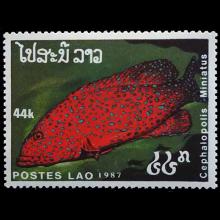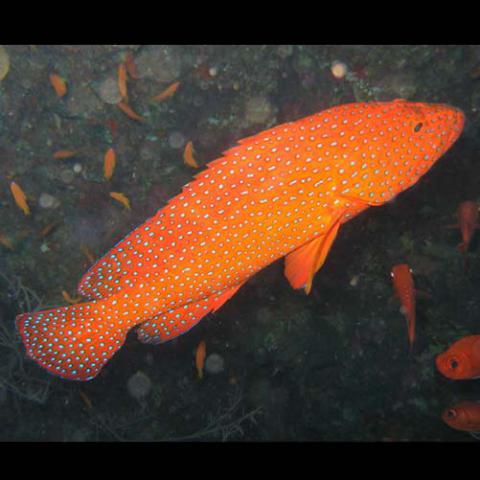NAMES
TAXONOMY
Laos
Issued:
Stamp:
Cephalopholis miniata
Laos
Issued:
Stamp:
Cephalopholis miniata
Laos
Issued:
Stamp:
Cephalopholis miniata
Genus species (Animalia): Cephalopholis miniata
Cephalopholis miniata, coral hind, coral rock cod, coral cod, coral trout, round-tailed trout or vermillion seabass is a species of marine ray-finned fish, a grouper from the subfamily Epinephelinae which is in the family Serranidae which also includes the anthias and sea basses. It is associated with coral reefs and occurs in the Indo-Pacific.
Description
Cephalopholis miniata has a body which is 2.6-3.0 times as long in standard length as it is deep. The dorsal profile of the head is flat to slightly convex between the eyes. It has a rounded, finely serrated preopercle which has a fleshy lower edge. The maxilla extends beyond the rear of the eye. The membranes of the dorsal fin has distinct indentations between its spines. There are 47-56 scales in the lateral line. The dorsal fin has 9 spines and 14-15 soft rays while the anal fin has 3 spines and 8-9 soft rays. The color of the body is orange-red to reddish brown with many small bright blue spots which cover the head, body and the dorsal, anal and caudal fins. They sometimes have diagonal paler bars on the flanks. The color of the juveniles is orange to yellow with fewer widely separated faint blue spots. They attain a maximum total length of 50 centimeters (20 in).
Reference: Wikipedia
Photo: Jaroslaw Barski (Wikipedia)


